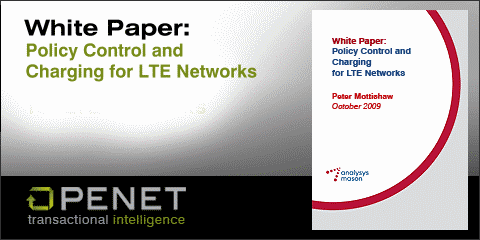
By
Michael Manzo
Availability of network bandwidth has become a very hot topic of conversation amongst wireless providers. With valuable data subscription customers experiencing spotty service, operators are having to answer the question about how much bandwidth is available, how much is needed and how to leverage existing bandwidth to provide better service and postpone additional CAPEX to maximize available bandwidth for optimal profit.
New wireless devices are making global headlines. From the splashy iPhone 3GS to the geeky Droid to the more staid BlackBerry, smartphone brands have built an almost cultlike following based on look, feel, functionality and ability to handle operator-provided personalized services. Additionally, devices like netbooks and e-book readers are joining the fray, with service packages bundled into the devices, promising service anytime, anywhere for a flat rate. USB modems and Dongles are also real culprits, with customers using laptops and netbooks to do all the things they do on their DSL but with their mobile networks. Unfortunately, when it comes to actual usage, sometimes the devices write checks that the networks can’t cash. The iPhone has been particularly notorious, overloading the network to such an extent that users in urban areas such as New York City and San Francisco have had trouble getting the most basic service.
|
|
...sometimes the devices write checks that the networks canít cash. |
|



solutions can help operators set rules for the allocation of bandwidth per service for better Quality of Service (QoS) management. While traditional QoS is crucial to accurately and effectively managing network bandwidth for individual subscribers based on the parameters of their plans, it’s not enough on its own. Today’s IP-based services require the ability to set specific rules based on subscriber usage and preferences and be flexible enough to extend bandwidth based on current network congestion levels.
Below are a few key questions that service providers are asking about maximizing network bandwidth.
|
|
|
|

Simple strategies such as indiscriminate routing of network traffic are not enough. The expense of over-provisioning to meet anticipated increases from bandwidth-hungry, personalized services isn’t a tenable solution cost-wise. Operators need to execute a more sophisticated strategy to manage his environment. The right approach falls under the heading of policy management.
Current data access business models frequently fail to align user behavior with the costs of this behavior. A solid policy management strategy with supporting
|
|

How can service providers reduce the strain on crowded wireless bandwidth?
Service providers can address this challenge in one of two ways. The first approach is to implement fair use policies. With the mass adoption of wireless devices comes a surge of heavy users—users who consume more than their contractually allowed piece of the bandwidth pie. In order to continue to be profitable and keep network traffic moving at the promised speed, service providers need to protect the quality of service for their data
|
|






